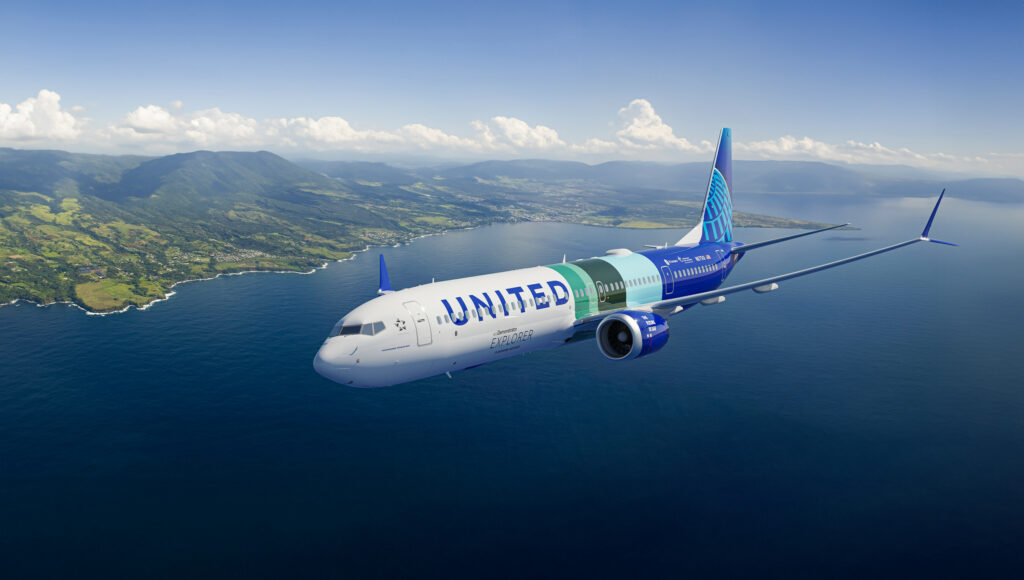UNITED STATES- United Airlines (UA) exacerbates Boeing’s ongoing 737 MAX crisis by revealing the discovery of loose bolts on several grounded MAX 9 aircraft. This development sparks fresh concerns among industry experts regarding the manufacturing processes of Boeing’s popular jet family.
In response to a recent incident involving an Alaska Airlines-operated flight, U.S. regulators have grounded 171 MAX 9 planes following a panel detachment shortly after takeoff from a Portland, Oregon airport on Friday. The incident necessitated swift actions from pilots to land the aircraft safely.

United Raises Concerns
United, one of the two U.S. carriers operating Boeing models with the panels, reported that its preliminary checks revealed loose bolts requiring tightening on multiple panels. This revelation has heightened concerns regarding the manufacturing process of the grounded MAX 9 jets.
According to a source familiar with the situation, United has identified close to 10 aeroplanes with loose bolts during its initial checks, surpassing the initial five reported by industry publication The Air Current. The number may further increase.
Ongoing discussions between Boeing, the U.S. Federal Aviation Administration (FAA), and the airlines are addressing precise inspection guidelines. Boeing is expected to revise the guidelines submitted to airlines on Monday, pending FAA approval for the changes before repairs can commence, according to sources.
Alaska Airlines (AS) is awaiting the final revised guidelines from Boeing to initiate plane inspections and is prepared to start as soon as it receives the required FAA approvals.
Boeing affirmed its commitment to maintaining close communication with MAX 9 operators, pledging assistance in addressing any findings during inspections.
The company emphasized its dedication to ensuring all Boeing aeroplanes meet design specifications, upholding the highest safety and quality standards

Flight Cancellations
Boeing’s primary single-aisle model currently in production features a panel referred to as a door plug, designed to replace an exit in configurations accommodating more passengers. Typically, most operators utilize the lower-density version incorporating the door plug.
Insiders familiar with the process reveal that the panel is installed in two stages, initially by supplier Spirit AeroSystems and subsequently completed by Boeing.
Investigators intend to scrutinize both manufacturing and maintenance records. Following this development, Spirit’s shares experienced an 11% decline on Monday.
The FAA refrained from commenting on the reports of loose bolts.
United Airlines, in a statement, disclosed findings during preliminary inspections, indicating potential installation issues in the door plug, such as bolts requiring additional tightening.
Once the FAA approves the final inspection process, the anticipated inspections are likely to span several days, resulting in numerous flight cancellations. A senior industry source noted the increasing unpredictability of the timeline, emphasizing the FAA’s cautious approach under its recently appointed leader.
Despite the successful landing of an Alaska Airlines flight on Friday after the detachment of a panel, United’s discovery of loose bolts has prompted an expansion of the investigation.
A diagram provided by the U.S. National Transportation Safety Board illustrates the 737 MAX 9 door plug, highlighting four securing bolts – two in the upper corners and two in the lower hinge brackets.
The plug is additionally fastened by “stop fittings” at 12 different locations along the side of the plug and the door frame, ensuring its stability within the airframe and preventing displacement.
Stay tuned with us. Further, follow us on social media for the latest updates.
Join us on Telegram Group for the Latest Aviation Updates. Subsequently, follow us on Google News.

